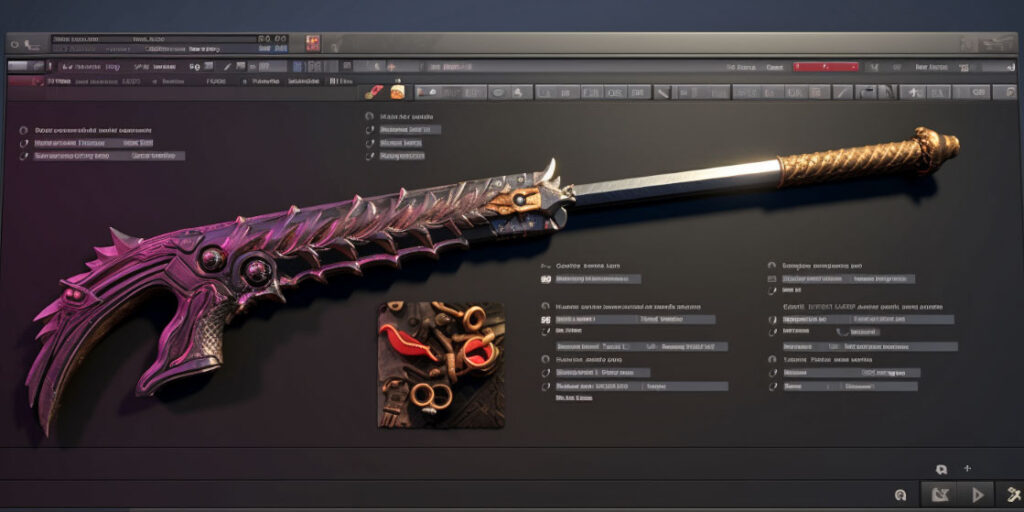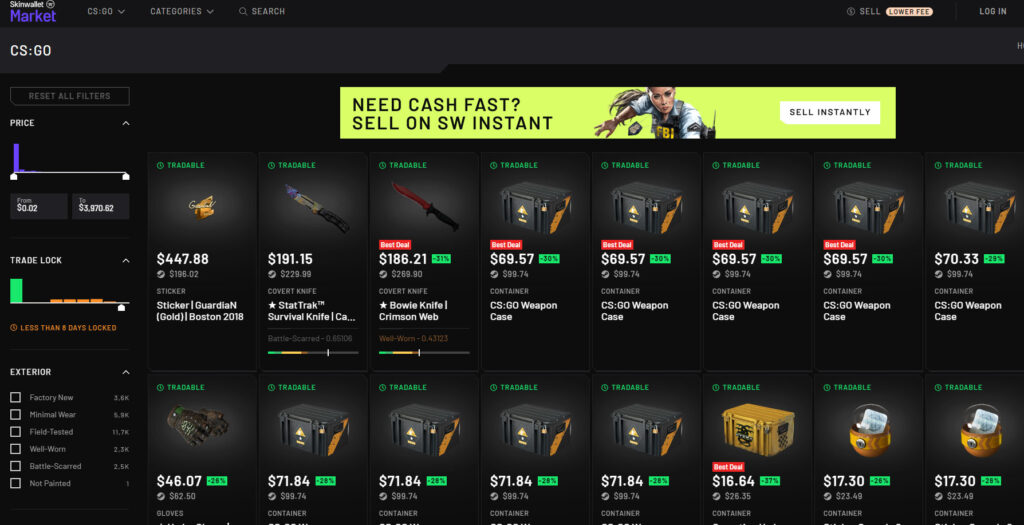The history of skins in video games is a fascinating journey that has evolved over time, with User-Generated Content (UGC) playing an important role in its development. Skins, which are custom appearances for characters, weapons, or other in-game objects, have become an integral part of the gaming experience. They allow players to personalize their gaming experience and express their creativity, and of course, content creators can monetize them.
The Birth of Skin Making
The concept of skins in video games kicked off in the late ’90s, a revolutionary period defined by the rise of 3D gaming. As games began to show more detailed graphics, creative devs started to cook up ways to help in-game avatars and loot stand out. This sparked the game-changing idea of editing the visuals of virtual objects, giving birth to the whole skins craze.
Quake, a legendary first-person shooter that dropped in 1996, is a great example of a game that rolled out skins. It let players customize their avatars by swapping out different textures and colors, setting the groundwork for more designs down the line. This was a landmark moment in gaming history that paved the way for the insane world of skin customization we’re all hyped about today.
Notable Games in Skin Making
Counter-Strike: Global Offensive (CS:GO)
CS:GO is one of the most popular games where skin making has become a phenomenon. The game has a thriving community of skin creators who design and submit their skins to the Steam Workshop, where other players can vote on them. The most popular and well-designed skins are then selected by the game developers, Valve, to be included in the game. Some of the most expensive skins in the gaming world, like the AWP Dragon Lore, come from CS:GO.
Minecraft
Minecraft is another game where skin making is incredibly popular. Players can create custom skins for their characters using various online tools and share them with the community. The game has a massive library of user-generated skins, and players can easily download and use them in their game.
Fortnite
Fortnite is a battle royale game that has taken the world by storm, and skins play a significant role in its popularity. Although the game does not officially support UGC skins, the community has found ways to create and share custom skins using third-party tools. Epic Games, the developer of Fortnite, has also organized contests where players can submit their skin designs, and the winners get their skins included in the game.
Monetizing Skin Creation

Game Developer Partnerships
Some game developers, like Valve, have official programs where skin creators can submit their designs, and if selected, they receive a share of the revenue generated from the sale of those skins. This is a great way for talented artists to monetize their skills and contribute to the gaming community.
Third-Party Marketplaces
There are also third-party marketplaces like Skinport and Skinwallet, where players can buy and sell skins. Creators can list their skins for sale on these platforms and earn money when other players purchase them.
Commissions
Skin creators can also offer their services on a commission basis. Players who want custom skins can hire artists to create them. There are several online platforms like Fiverr and DeviantArt where artists can offer their services.
Tips for Creating Great Skins
Understand the Game’s Aesthetics
Every game has its own unique aesthetic and style. It’s essential to understand the game’s visual language and create skins that fit seamlessly into its world. Study the game’s existing skins, characters, and environments to get a sense of its style.
Be Original
While it’s essential to understand the game’s aesthetics, it’s also crucial to bring your own unique perspective and creativity to your designs. Try to create something new and exciting that stands out from the existing skins.
Pay Attention to Detail
The best skins are often the ones with the most attention to detail. Make sure to spend time on the finer details of your design, like textures, patterns, and color gradients. These small details can make a big difference in the overall quality of your skin.
Test Your Skins In-Game
It’s essential to test your skins in the game to see how they look in action. This will help you identify any issues with your design, like clipping or texture stretching, and make the necessary adjustments.
Get Feedback from the Community
The gaming community can provide valuable feedback on your designs. Share your skins on forums, social media, or the game’s official community channels to get feedback from other players. Listen to their suggestions and make any necessary adjustments to improve your skins.
Best Ways to Monetize Your Skins
Submit Your Designs to the Game Developer
Many game developers have official programs where you can submit your skin designs, and if selected, you will receive a share of the revenue generated from the sale of those skins. This is one of the best ways to monetize your skins as it gives you access to the game’s entire player base.
Sell Your Skins on Third-Party Marketplaces

There are several third-party marketplaces, like Skinport and Bitskins, where you can list your skins for sale. These platforms have a large user base of players looking to buy skins, making it a good option for monetizing your designs.
Offer Custom Skin Creation Services
Many players are willing to pay for custom skins that are unique to them. You can offer your services as a skin creator on platforms like Fiverr or DeviantArt and create custom skins for players on a commission basis.
Participate in Skin Design Contests
Some game developers organize skin design contests where players can submit their designs, and the winners receive cash prizes or have their skins included in the game. Participating in these contests can be a great way to get your work noticed and earn some money.
Create a Portfolio and Promote Your Work
Building a portfolio of your work and promoting it on social media and gaming forums can help you attract clients who are willing to pay for your skin creation services. Make sure to include high-quality images of your skins and links to any skins you have created that are available for purchase.
Skin in the game
As the world of skins keeps revolving, tech like non-fungible tokens (NFTs) are gearing up to flip the script on in-game cosmetics. NFTs offer a way to craft one-of-a-kind, tradable digital goodies that could potentially be used across multiple games and platforms. This could pave the way for a linked-up gaming universe where players can showcase their skins and other virtual swag, driving up the importance of skins in the gaming world.
The journey of the skin has been a wild ride so far – an evolution of in-game cosmetics from basic beginnings to the booming virtual economy we see now. As tech and gaming keep leveling up, skins will for sure stay a key part of the gaming experience, giving players endless chances for personal flair and customization. With the addition of fresh tech like NFTs, the future of skins is set to be even more thrilling and varied, pushing the limits of what it means to be a gamer and a content creator.
